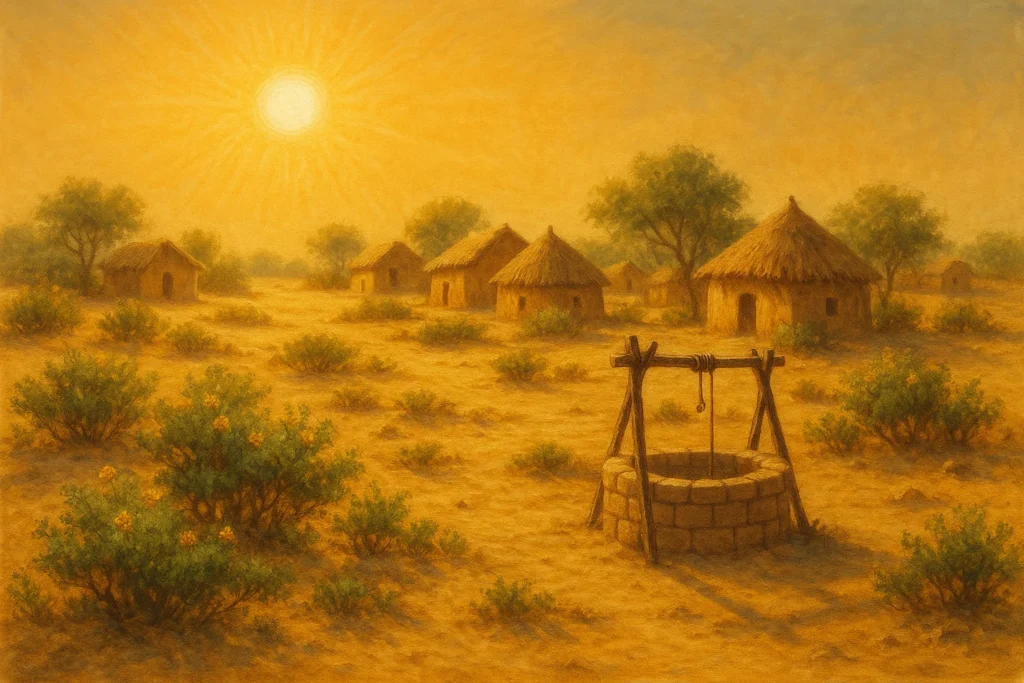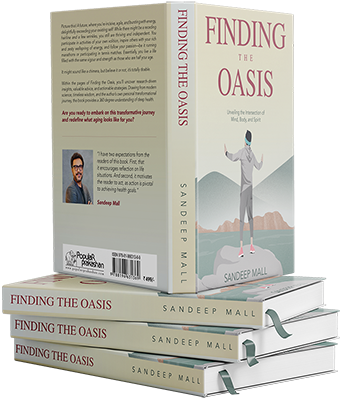Sunshine All the Time Creates Desert

We are deep into summer now. The kind of days where the air feels thick and the sun presses down like a weight. Temperatures soaring past 45 degrees. It’s punishing. Every morning, I still step outside. I spend some time on the lawn before the heat intensifies. It helps me sleep better at night.
Today, the grass under my feet felt lush and soft. Bright green. I’ve noticed this before. The lawn thrives in this brutal heat. It looks its best now. But come winter, it withers. Dull and patchy. No life in it. It’s strange. You’d think the cooler season would be kinder. But summer, despite its cruelty, brings the beauty out of it.
Yesterday, I left my office around the usual time. The car was parked in the open, and stepping into it felt like punishment. The steering wheel burned. The seatbelt buckles scalded my skin. Even after the air conditioner kicked in, the heat clung to me. I was still sweating by the time I reached home.
And on that drive, I remembered the early days of my career. Two-hour bus rides, one way, in buses with no air conditioning. Packed tight. Windows half-stuck. It was normal then. Even after I bought my first car, there was no AC. I didn’t mind. The heat was just part of the deal. Somehow, it did not feel unbearable.
I remember my friend Arati Rao speaking at a Nature in Focus festival. She shared a story about a remote village near Jaisalmer in Rajasthan. They get maybe a single day of rain in an entire year. Less than 200 millimetres of rainfall annually. But when it does come, sometimes all at once, the desert changes.
Wells that had been dry for months refill. Grasses shoot up. Tiny flowers explode across the sand like confetti. It does not last. The heat comes back. The sand takes over again. For that brief stretch of time, the whole region breathes differently.
That bloom is only possible because of the long, hard wait. The desert flowers are beautiful because they are rare.
We forget this. We chase constant sunshine. We crave ease, comfort, speed. Everything must be instant. Discomfort is treated like failure. Waiting feels like a waste.
But that’s not how growth works.
The Stoics knew this. Religions understood this, too. Fasting. Silence. Pilgrimage. Hardship. A way to remember what matters. A way to grow.
Science agrees. Muscles only grow after they break down. Bones need weight to stay strong. The immune system needs exposure to threats. That is how vaccines work.
Too much protection weakens. Too much ease robs us of strength.
The same thing happens with the mind. Studies show that people who have faced moderate struggles cope better than those who have had none. Not constant trauma. But enough hardship to learn. Enough pain to shape perspective.
We need the rain.
I am not saying hardship is noble. There is nothing romantic about suffering. Abuse, poverty, violence does not make us stronger. It breaks people. That’s not the rain I mean. If this heat continues for one more week, the beautiful lawn will die.
I am talking about small things. The friction we now design away. Boredom. Failure. Waiting. Struggle.
We smooth everything out now. For our kids. For ourselves. Every problem gets a shortcut. Every need gets an app. And we wonder why anxiety rises. Why resilience falls. Why people freeze at the first sign of trouble.
We gave them sunshine all the time.
But look at nature. Markets crash to stay healthy. Forests burn to make room. Muscles grow under stress. Diamonds form under pressure. Pearls come from irritation. Even trees need wind. Without it, they collapse under their own weight.
Everything in life needs some resistance.
So when the days get hard, and they will, I remember that village near Jaisalmer. One day of rain, and everything changes.
The bloom that only comes because the rain is rare.




